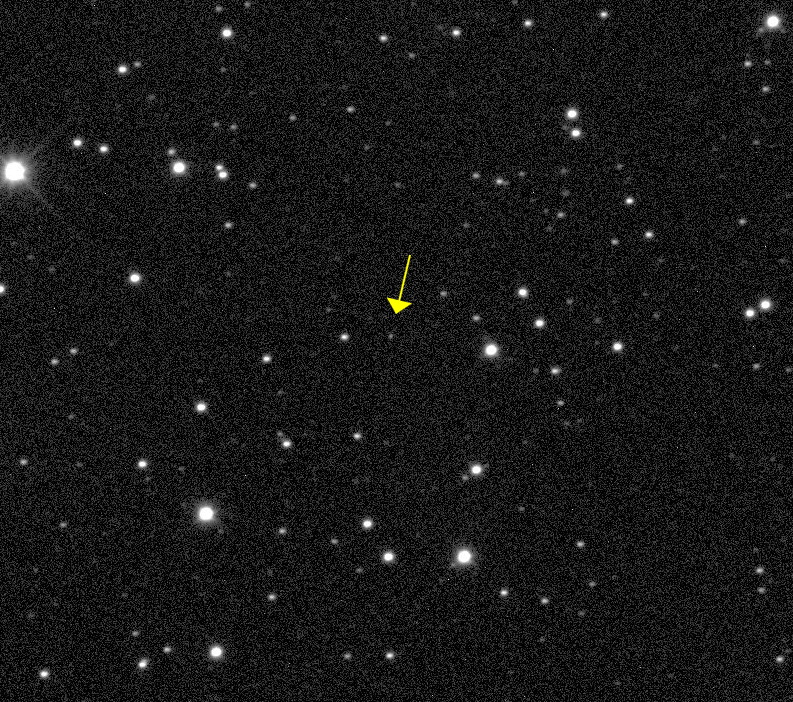
The International Astronomical Union has named asteroid 20046 Seronik (1993 FE15) in honor of Sky & Telescope Consulting Editor Gary Seronik. The IAU announcement suggests, correctly, that Seronik has been communicating astronomy to amateur astronomers and the public for many years.
Born and raised in Canada, Seronik has been fascinated by the night sky since childhood. “The truth is,” he comments, “I can’t remember a time when I wasn’t drawn to the night sky. Maybe part of the reason was that my family lived on an orchard under a splendid, dark rural sky.”
His birth on May 5, 1961, coincided with NASA astronaut Alan Shepard becoming the first American to rocket into space. As a child, Seronik devoured magazine articles on the space program and collected books on astronomy. He bought his first telescope, a Tasco 3-inch reflector, in 1972 — and still has it. He began subscribing to Sky & Telescope magazine in 1973 when he was only 12 years old.
Seronik’s career got underway in the early 1990’s when he wrote and produced planetarium shows at the H.R. MacMillan Space Centre in Vancouver, British Columbia. Seronik’s first column for S&T appeared in the June 1997 issue, and he became an Associate Editor the following year. Throughout this period, Seronik was a member of the Royal Astronomical Society of Canada, and in 2008 he won the RASC Simon Newcomb Award for excellence in astronomical writing. Seronik was a Contributing Editor at S&T in 2016 when he became Editor of the Canadian bimonthly magazine, SkyNews. In November 2019, he rejoined S&T full-time.
Seronik loves making telescopes. He has ground mirrors for numerous homebuilt reflectors, several of which have appeared in the pages of S&T. Readers might remember his 6-inch f/9 planetary Newtonian, or his airline-friendly 8-inch and 12¾-inch Dobsonian “travelscopes.” It was almost inevitable that Seronik would take on the long-standing column Telescope Workshop (now Astronomer’s Workbench, helmed by Jerry Oltion).
Seronik is also the longest-running author of the Binocular Highlights column, which in turn inspired his best-selling book Binocular Highlights: 109 Celestial Sights for Binocular Users. What’s more, he helped develop S&T’s very popular Pocket Sky Atlas.
Seronik’s favorite sky target is the Moon. A dedicated lunaphile, he served as editor for the new edition of Antonín Rükl’s classic Atlas of the Moon and also for Charles A. Wood’s highly regarded book, The Modern Moon. But of all the Moon products Seronik has helped bring to fruition, he’s proudest of Sky & Telescope’s Field Map of the Moon, which he regards as an ideal telescopic companion for lunar observers.
A main-belt asteroid approximately 5.3 kilometers wide (3.3 miles), 20046 Seronik was discovered at the ESO’s La Silla Observatory in Chile, on March 17, 1993, as part of the Uppsala-ESO Survey of Asteroids and Comets.
The newly named space rock joins a list of 13 other S&T-inspired asteroids that includes 2157 Ashbrook, 3031 Houston, 3243 Skytel, 3706 Sinnott, 3841 Dicicco, 3819 Robinson, 4726 Federer, 7116 Mentall, 7228 MacGillivray, 9983 Rickfienberg, 10373 Macrobert, 2925 Beatty, and 7065 Fredschaaf.
In addition to being adept at astrophotography, Gary Seronik is an avid terrestrial photographer who never leaves home without a camera. Today, that home is in the small city of Penticton, British Columbia, where he and his wife Ellen are close to the wonders of nature and the night sky.
